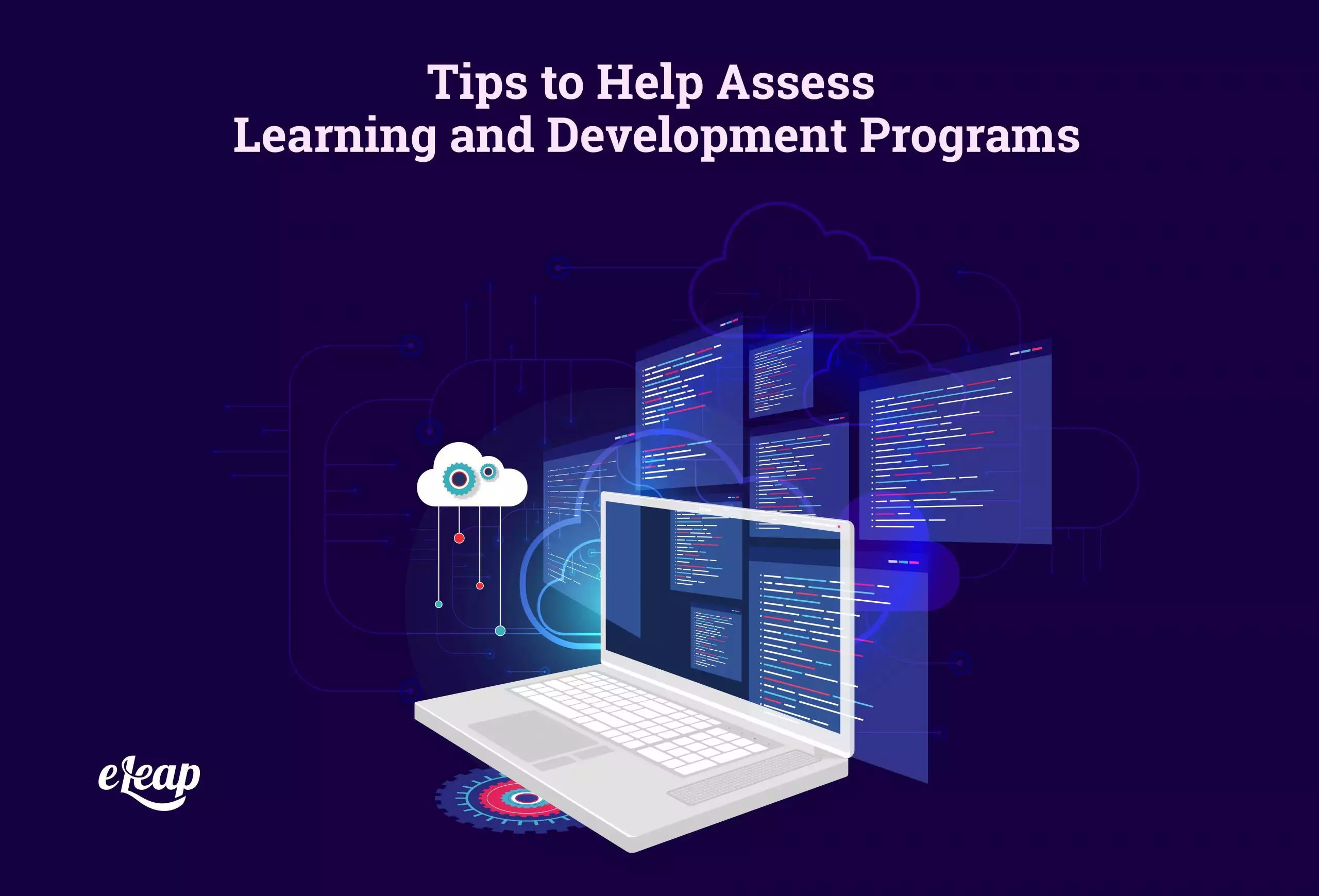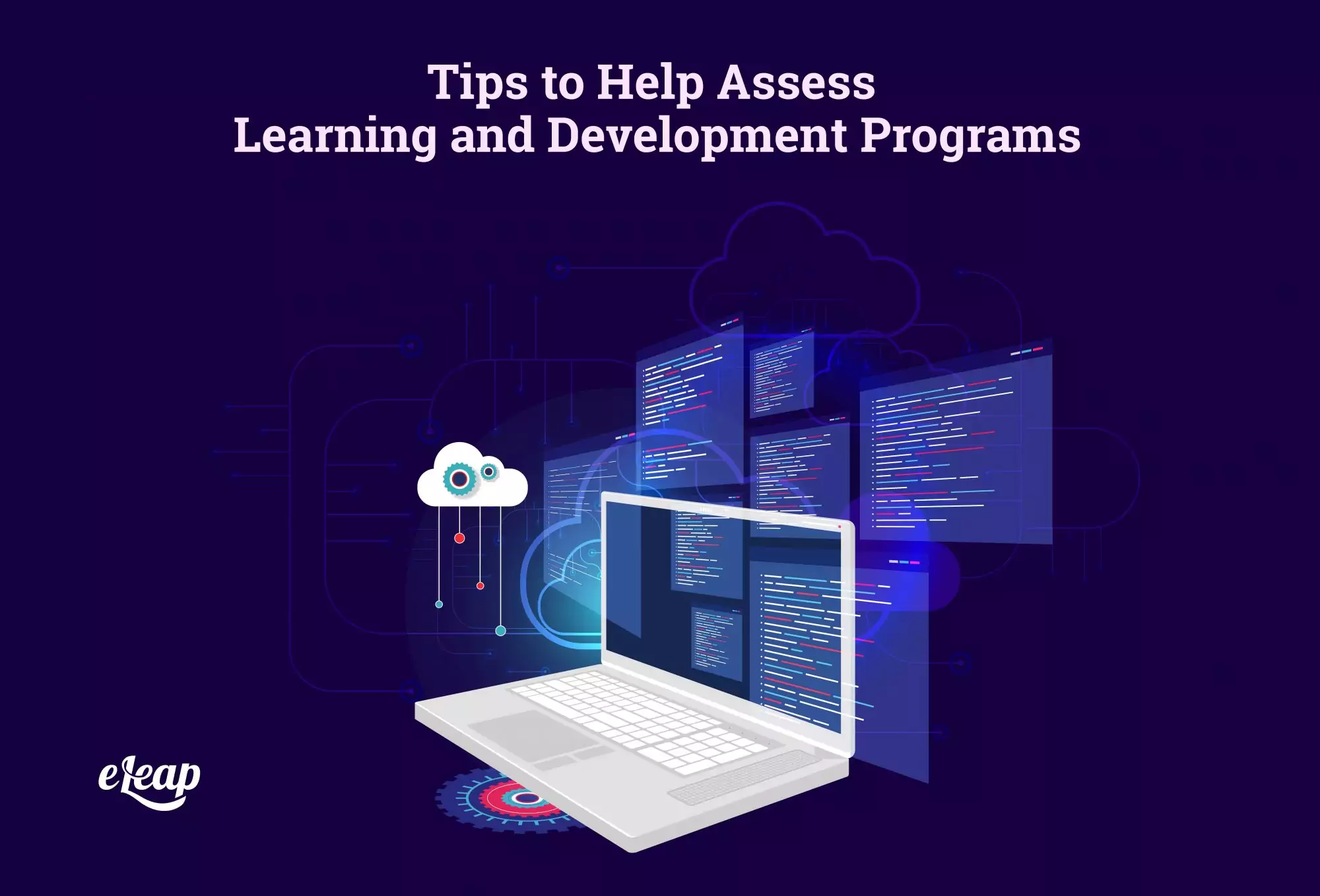Tips to Help Assess Learning and Development Programs

How effective are your learning and development programs? That is a critical question, but many administrators cannot answer it. The reason? They are unsure how to assess their L&D programs’ effectiveness.
To be fair, it can be challenging. There are so many parts to a learning and development program, so many different learners and potential forward paths, so many possible desired outcomes, that there is really no one-size-fits-all solution that allows administrators to accurately measure success at a glance.
The good news is that there are ways to assess the value and efficacy of your learning and development programs. You just need to know what they are. In this article, we will cover critical tips to help ensure that you can get an accurate estimate of learner retention, progress, and more.

Know What You’re Measuring
Our first tip is commonsense, but it is often overlooked. You cannot assess a learning and development program if you are not entirely sure what you are measuring. To combat that, you must define the KPIs you’ll be measuring. What matters most here? What indicators will tell you whether the program is delivering value?
Doing this will require that you know what you want the program to achieve and how to measure that achievement. For instance, if the program is for customer service representatives, is the goal to decrease complaint escalations to upper management? Is it to streamline the support process? Start with the “what” and then you can move on to the “how”.
Tie Outcomes to Business Objectives
Learning for learning’s sake is valuable. However, to see the anticipated ROI from your initiatives, you must go beyond this. All learning should be mapped to specific business outcomes. Without that connection, it becomes impossible to assess the impact or value of your efforts.
To tie outcomes to business objectives, simply answer a few questions:
- What do employees need to learn?
- Why is that learning important to employees and/or customers/clients?
- What will the learning help employees achieve?
- How does that achievement benefit the business?
Without a connection between learning and business objectives, it is impossible to measure success or assess value. This should be one of the first steps during the planning process. Do not roll out learning and development programs until you have fully defined the learning/business objective connection.
Choose an Assessment Model
While many programs can be assessed informally, that is not always the case. In these instances, formalized assessment models can be used. Several different options exist today, including:
- The Kirkpatrick Model
- Anderson’s Model of Learning Evaluation
- The Phillips ROI Model
- The Kaufman Evaluation Method
Of these, the Kirkpatrick model remains one of the most frequently used. It is simple, straightforward, and easy to follow. The model is based on four levels – reaction, learning, behavior, and results. Each level builds on the one before and feeds into the one that follows. While a full discussion of the Kirkpatrick Model is beyond the scope of this article, we can outline it to help you understand the value it can offer.
- Reaction – In this step, you must assess the learner’s reaction to the training. This is most often done after training is completed, and sometimes reassessed weeks or even months later. In addition to assessing skills or knowledge, measure the learner’s satisfaction with the training itself.
- Learning – With a before and after assessment, it becomes possible to measure learning. However, doing so requires intentionality and strategy. You must know where employees are at before training as well as afterward to complete this step.
- Behavior – Here, you are looking to see if the training resulted in the desired behavior. What changed? What did not? Was the degree of change within acceptable levels? You can measure behavioral change in many ways, but direct observation in the workplace is usually the most accurate.
- Results – Finally, did the training have the desired impact on the business objective? What was the ultimate result? Is additional training necessary? It can be challenging to measure results, but it can be simplified by tying results to outcomes, such as improved quality, improved customer service ratings, or increased efficiency.
While we have outlined the Kirkpatrick Model above, it is important to understand that each assessment model offers something of value. Ideally, you will compare your options and choose the method that fits your needs. It is not unusual to use different models for different assessment needs.
Get Feedback
Finally, you can go directly to the source to measure L&D program effectiveness and value. Note that this should not replace analyzing whether the program is delivering the anticipated results and ROI. However, there is a lot of value in surveying your employees to get their feedback about the experience. Some of the questions to ask include:
- Do you feel that the training provided you with the knowledge and skills necessary?
- Have you been able to apply knowledge and skill learned in training during your job duties?
- What would you like to change about the program and why?
- Do you feel that the content delivery method was appropriate for this type of training?
- How would you improve the training experience?
It’s important to conduct these surveys at two points – when learners first finish the program and then again several weeks to a month later. The initial assessment will help you understand how learners feel about the experience immediately following completion. The follow-up will help you understand how that changes over time and with the opportunity to apply the knowledge and skills learned. Note that it is entirely normal for the results of these surveys to be drastically different.
Building a Better Training System
Understand that all learning and development programs are in flux – they’re dynamic, evolving things that must change over time. If your programs don’t change and grow, they’re not living and will eventually fail to deliver value to your learners or your organization. Regularly assessing effectiveness is the key to making informed, accurate changes that drive ROI and positive results for all involved.
For more information click here.